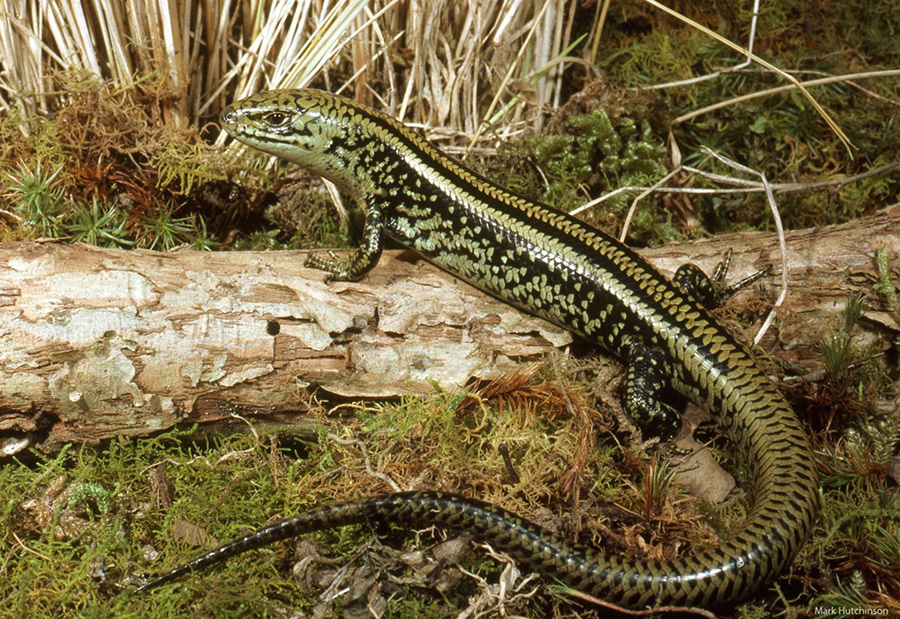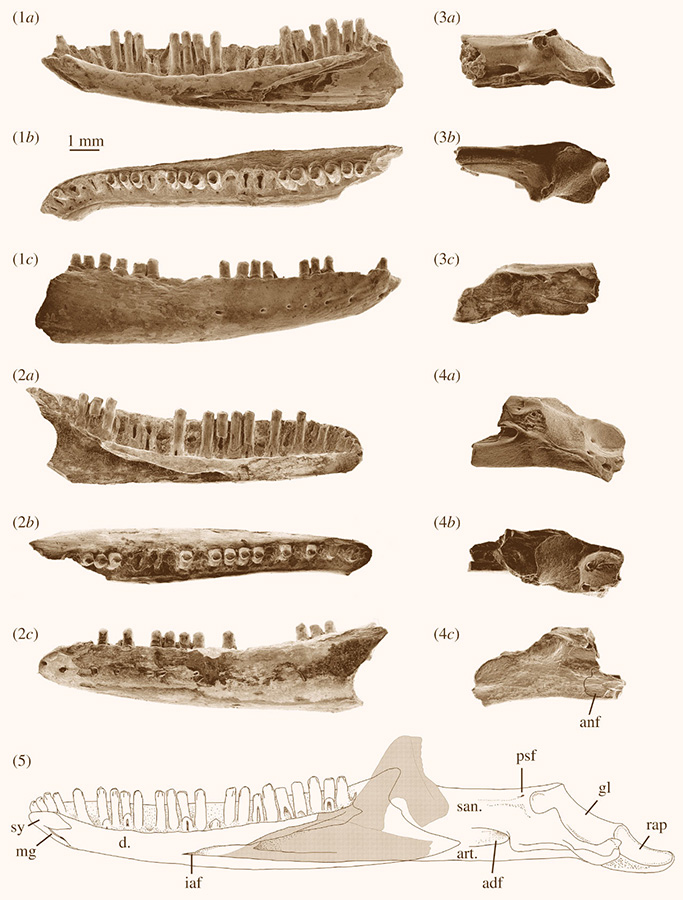Fossils of New Skink Species Unearthed in Australia

A new species of extinct skink that lived during the Oligocene Epoch has been identified from the fossilized remains found in South Australia.
The newly-identified species lived approximately 25 million years ago, making it Australia’s known skink.
Named Proegernia mikebulli, it belongs to Egerniinae, a large subfamily of social skinks — including living bluetongues, sleepy lizards (shinglebacks), land mullets and spiny-tailed skinks — within the family Scincidae.
“The species is named after Professor Michael Bull of Flinders University, South Australia, who devoted decades to documenting the ecology of Australia’s egerniine skinks,” said lead author Dr. Kailah Thorn, a paleoherpetologist at the South Australian Museum and Flinders University, and colleagues.
Several incomplete jaws of the ancient lizard were recovered from the Namba Formation outcropping at Lake Pinpa and Billeroo Creek, seven hours drive north of capital city Adelaide.
The fossiliferous deposits of this formation also bear abundant aquatic (such as fish, the giant platypus Obdurodon and waterfowl) and land-dwelling (such as possums, dasyuromorphs and skinks) vertebrates.

“Some of Australia’s most famous animals, including koalas and kangaroos, had been traced back to their fossil ancestors in remarkable finds in central South Australia,” Dr. Thorn said.
“The significance of this site containing the ancestors of Australia’s early marsupials was already well established, but no fossil lizards had ever been found in the Namba Formation.”
“It was 45 degrees Celsius in the shade that day and hard work digging through the clay, but it was definitely worth it once the tiniest of bone fragments turned out to be those of the oldest Australian skink.”
“Fossil lizards are often too small to be identified when you’re in the field and lizard skulls are made of more than 20 individual bones that all disarticulate when they fossilize,” Dr. Thorn added.
“The discovery of the tiny fossil lizards in an area the size of one million soccer fields was enabled by building an understanding of the geology of the region, and targeting bands of silt to sieve and sort back at the lab.”
The team’s paper was published in the journal Royal Society’s Open Science.
_____
K.M. Thorn et al. 2021. A new species of Proegernia from the Namba Formation in South Australia and the early evolution and environment of Australian egerniine skinks. R. Soc. open sci 8 (2): 201686; doi: 10.1098/rsos.201686
Source: www.sci-news.com/








